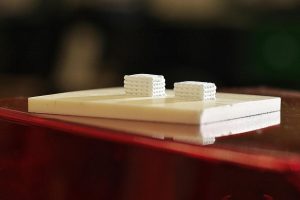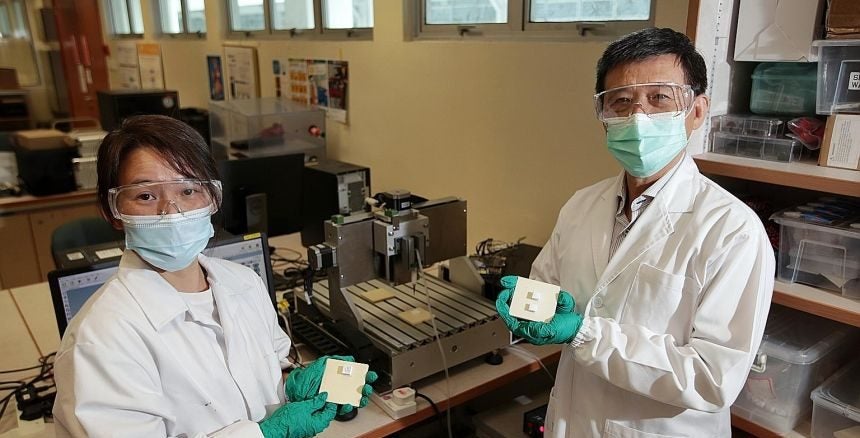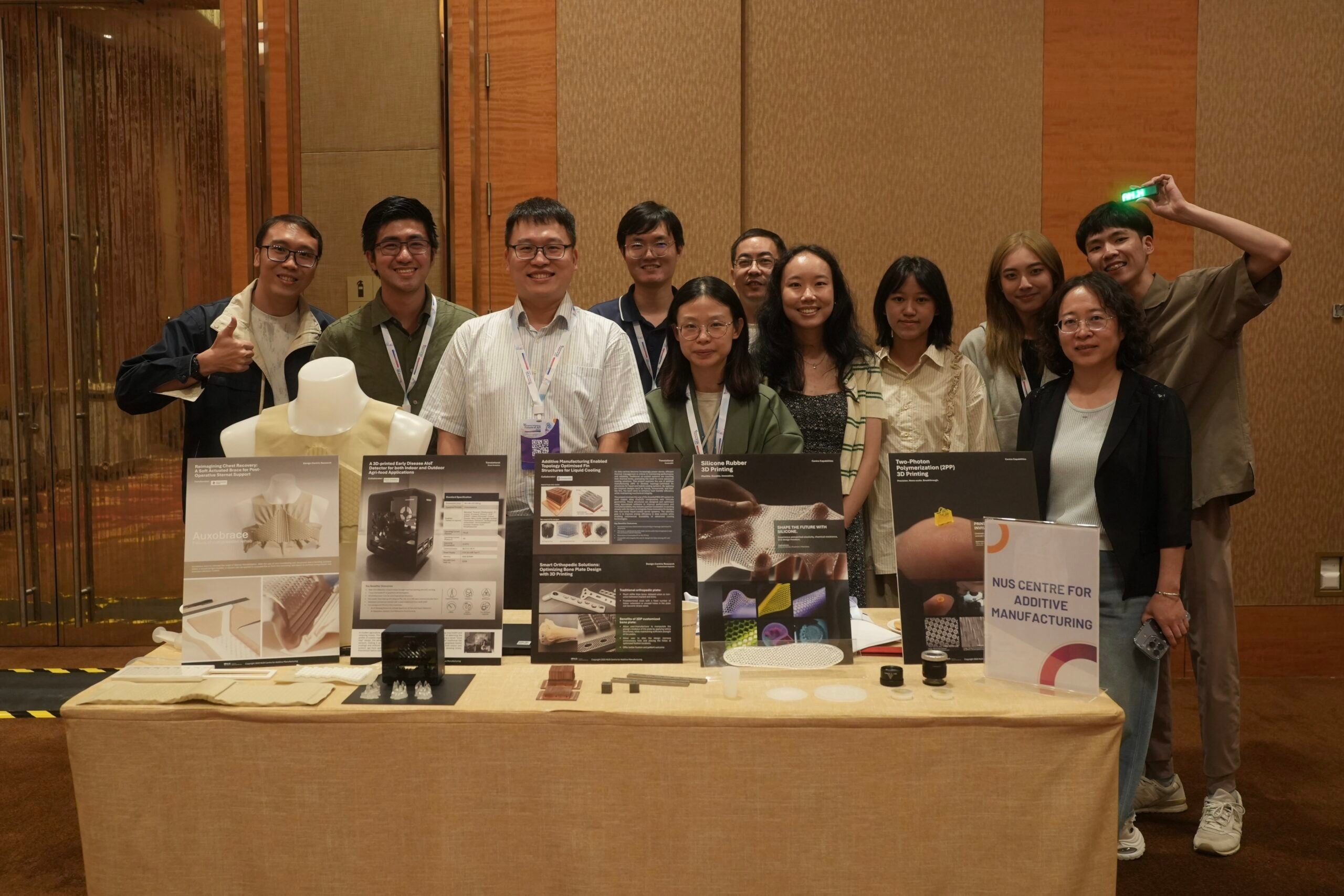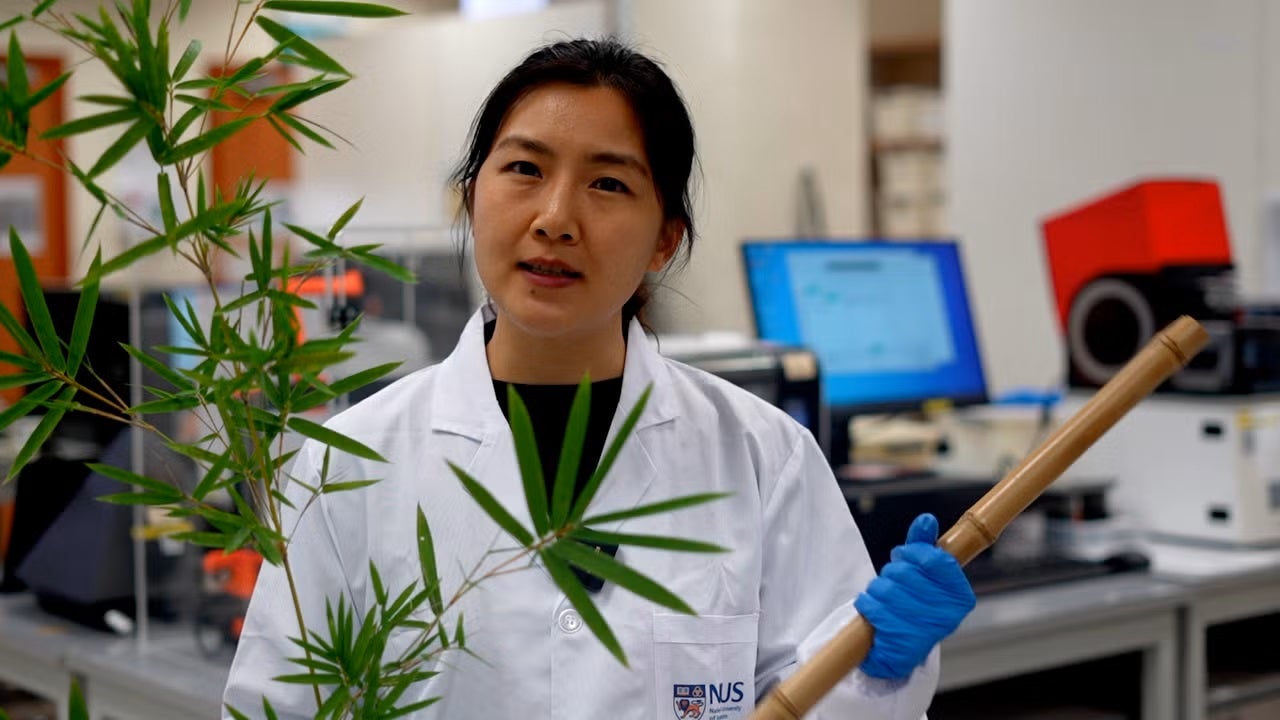Straits Times: Using corals to 3D-print implants for bone grafts
Doing so allows implant to be customisable to each patient, in terms of shape and porosity
Using sea coral materials to 3D-print implants for a bone graft could soon become a reality here.
Today, the surgical procedure uses transplanted bones to repair or regenerate diseased or damaged bones. This can be taken from one’s own bones, or those from the dead, or by using bone substitutes made from materials like polymers.
But patients with bone disease or fractures needing a bone graft may soon have another bone substitute option, as researchers from the National University of Singapore’s Centre for Additive Manufacturing (AM.NUS) have been studying the feasibility of custom 3D-printing implants with coral materials.


The four-month-long project, which began in April, was done in collaboration with Taiwan-based Popeye Marine Biotechnology.
The company supplied the coral-cultured powder – made of calcium carbonate – for 3D printing, while the researchers at AM.NUS conducted the feasibility test.
A spokesman for the firm told The Straits Times only six species of corals are suitable for use in human bones, though it declined to reveal which type of species it cultivates.
However, Dr Jani Tanzil, a senior research fellow at NUS’ Tropical Marine Science Institute, said skeletons of Scleractinian – or stony corals from three families, the Porites, known as finger coral, Goniopora, often called flowerpot coral, and Acropora – have been used as bone substitutes.
But scientists have so far been using a technique known as moulding to create the coral-made bone implants, said Associate Professor Lu Wen Feng, director of AM.NUS, who was overseeing the NUS arm of the project. However, this method may not be able to produce the design as intricately compared with 3D-printing, he added.
NUS’ marine biologist Huang Danwei said that lab-based synthesis of calcium carbonate which is found in the coral material and limestone is an active area of research. “The faster these technologies scale up to produce the specific coral-like powder needed for the 3D-printing applications, the more likely this 3D-printing solution will be sustainable in the near future,” he said.
Prof Lu told ST that corals have long been studied for their potential in bone grafting, given their porous micro-structures which are similar to the sponge-like pores in human bones.
The porosity also makes coral materials a good carrier for cell attachment and bone ingrowth, he added.
Professor Jerry Fuh, who is principal investigator of the study, said: “Creating bone grafts through 3D printing allows the bone implant to be customisable to each patient, in terms of its shape and porosity.”
Dr Vincent Seah, an orthopaedic surgeon with the Parkway East and Mount Elizabeth Novena hospitals, said bone grafting is often needed when the existing bone has to be removed due to disease, infection or trauma, or when a person has a fracture that has failed to heal.
“Suitable materials for bone grafting have to be bio-compatible with our normal tissues, and they must also be non-toxic and free of bacteria or contaminants,” he added.
Having a 3D-printed bone implant allows for a more customised fit, and less soft tissue dissection will be required too – which improves the condition of the tissue at the surgical site, said Dr Seah.
He noted that 3D-printed bone implants from coral materials have attracted a lot of interest, though their composition and biodegradability are areas which still need development.
Dr Henry Soeharno, a consultant in the Department of Orthopaedic Surgery at Singapore General Hospital, said that the synthetic bone substitutes serve as a scaffold for new bone to grow into, and that the process of bone ingrowth should be in tandem with the biodegradation of the synthetic material.
Bone growth and healing can take around one to two years on average, he added.
Going forward, one potential area the researchers will be looking at is how the coral powder material could be made biodegradable.
Prof Fuh said this would involve including additional chemicals or additives in the process, as calcium carbonate on its own does not fully biodegrade in the human body.
He said: “The biggest challenge then would be to ensure that the bone implant is able to maintain its shape and porous structure in the implanted places so that the new bone has time to heal and regrow.”

Different types of bone grafts
Bone grafting is a process of replacing a bony defect which may be caused by diseases like tumours, infections or trauma.
Dr Henry Soeharno, a consultant in the Department of Orthopaedic Surgery at Singapore General Hospital, said there are three categories of bone grafting:
1. Autologous bone grafts (using the patient’s own bone)
This method is advantageous as it is able to preserve some of the cells and protein required for bone healing since the bone is harvested from the patient himself.
However, the amount of bone available for harvesting is limited and could sometimes cause complications at the surgery site as the wound heals.
2. Allogenic bone grafts (using bones from the dead)
The bones are taken from bone banks, mostly from overseas. This is the most common method as such bones are readily available and a large volume can be used in one sitting.
Dr Soeharno said that when a large amount of bone is required, an allogenic bone graft would be more suitable. However, the bones have to undergo a very strict screening process for potential transmissible diseases, and have to be sterilised.
There is still a small risk of disease transmission despite the stringent screening process.
3. Synthetic bone grafts (using bone substitutes)
These are readily available and unlimited in supply. However, the time taken for them to biodegrade or dissolve, could vary.
Dr Soeharno said if a synthetic bone does not fully biodegrade, it could in turn lead to fractures or malunion of the bone, where the bone heals but not in the right position.






